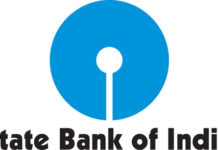1940-1956: 1st Generation (Vacuum Tubes) – General Computer Awareness for Bank Exams
First generation computers used vacuum tubes as components of memory and relied on ‘machine language’ (the most basic programming language). A vacuum tube is a sealed glass tube containing a near-vacuum which allows the free passage of electric current.
- These computers were limited to solving one problem at a time.
- No monitors were there! Output was released in printouts! (Monitors appeared in 3rd generation of computers!)
- Input was based on punched cards and paper tape.
- ENIAC (Electronic Numeric Integrated and Calculator) was the world’s 1st successful electronic computer which was developed by the two scientists namely J. P. Eckert and J. W. Mauchy.
- Other first generation computers were UNIVAC (Universal Automatic Computer), EDSAC (Electronic Delay Storage Automatic Calculator), EDVAC (Electronic Discrete Variable Automatic Computer) and LEO (Lyons Electronic Office)
1956-1963: 2nd Generation (Transistors) – General Computer Awareness for Bank Exams
The thing that upgraded the entire generation of computers to a more advanced system was – transistor. Invented in 1947, it converts electronic signals and electrical power. Transistors made computers smaller, faster, cheaper and less heavy on electricity use.
- The speed of a computer’s performance depends on the speed of transistors.
- In other words, the faster the transistors, the faster the computer.
- The 2nd generation computers still relied on punched cards for input/printouts like 1st generation.
- The symbolic language (assembly language) was developed and the programmers could create instructions in words.
- High-level programming languages – early versions of COBOL* and FORTRAN** – were also developed.
*COBOL – Common Business-Oriented Language: a compiled English-like computer programming language designed for business use.
**FORTRAN – Formula Translation: a language for scientific, engineering and numerical computation.
1964-1971: 3rd Generation (Integrated Circuits) – General Computer Awareness
- With the invention of Integrated Circuits – the small circuits which can perform the functions of a larger circuit, transistors were miniaturized and put on silicon chips.
- The 3rd generation computers were the first computers where users interacted using keyboards and monitors (and interfaced with an operating system).
- This enabled these machines to run several applications at once.
- Functions were based on monitor memory.
1972-2010: 4th Generation (Microprocessors) – General Computer Awareness for Bank Exams
The Intel 4004 chip was developed in 1971, which positioned all computer components (CPU, memory, input/output controls) onto one single chip!
- The Intel 4004 was developed by Ted Hoff.
- These microprocessors allowed to make computers of smaller size with speedy and efficient processing.
2010 onwards: 5th Generation (Artificial Intelligence) – General Computer Awareness
- The intelligent machines who can work like humans, or better.
- SIRI of iPhones, automatic cars, robots serving various purposes, all of them are part of this generation.
- Artificial intelligence today is properly known as narrow AI (or weak AI)
- It is designed to perform a specified task like driving or solving complex mathematical equations.
- General AI or strong AI is the aim of today’s world where machines can perform many functions like humans.
Definition of Artificial Intelligence:Artificial Intelligence is a branch of computer science dealing Fact: John McCarthy is known as the father of Artificial Intelligence. |
What are the components of a computer? – General Computer Awareness
⇒ Hardware
Hardware means Keyboard, Monitor, Mouse, and Printer, including the digital circuitry, etc. The following are the different types of hardware:

Input devices
Send data to a computer. E.g. Keyboard, mouse, scanner, trackball, touchpad, touchscreen, digital camera, web camera, microphone, etc.
Output devices
Receive data from a computer, usually for display, projection, or physical reproduction. E.g. Monitor, printers, plotters, projector, Computer Output Microfilm (COM), speaker, head phone, sound card, video card, microfiche, etc.
Processing devices
CPU and Mother board are processing devices because they process information within the computer system.
The Central Processing Unit or the CPU or processor is the electronic circuitry within a computer that carries out the instructions by performing the basic arithmetic, logical, control and input/output operations specified by the instructions.

The CPU consists of:
- Arithmetic & Logic Unit
- Control Unit
- Memory
⇒ The Arithmetic & Logic Unit (ALU) performs simple arithmetic and logical operations.
⇒ The Control Unit (CU) manages various components of the computer. It reads and interprets instructions from memory and transforms them into a series of signals to activate other parts of the computer. The control unit calls upon the arithmetic logic unit to perform the necessary calculations.
⇒ Primary storage or main memory or memory is the area in a computer in which data is stored for quick access by the computer’s processor. Random Access Memory (RAM) and cache are examples of a primary storage device.
Remember, RAM is volatile because whatever is stored in RAM is lost as soon as the computer is switched off. Cache is a fast temporary storage where recently or frequently used information is stored to avoid having to reload it from a slower storage medium.
⇒ The mother board holds and allows communication between many of the crucial electronic components of a system, such as the CPU and memory. It provides connectors for other peripherals.

Storage devices
- Primary storage – RAM, cache.
- Secondary storage – In these devices, information can be stored either temporarily or permanently.
- They can be external devices like a compact disc (CD) or USB storage device or can be installed inside the computer like a hard drive.
⇒ Software
A software is a set of instructions that directs a computer’s hardware to perform a task. There are two types of software: system software and application software.

System software
System software is designed to operate the computer hardware and to provide a platform for running application software. Application software are designed to help the user to perform specific tasks like MS Word, Notepad, Google Chrome, and Calculator.
Application Software
- This software is used to modify text, image, graphics etc.
- There are many application Softwares, Word Processing software, Database Software, Spreadsheet software, Presentational Software, Educational Software etc to name a few.
Some Computer Programs run as a link between System software & Application Software. They are as follow: kabya
Firmware and BIOSThe operating system relies |
Mobile Device SoftwareModern smartphones use both |
















